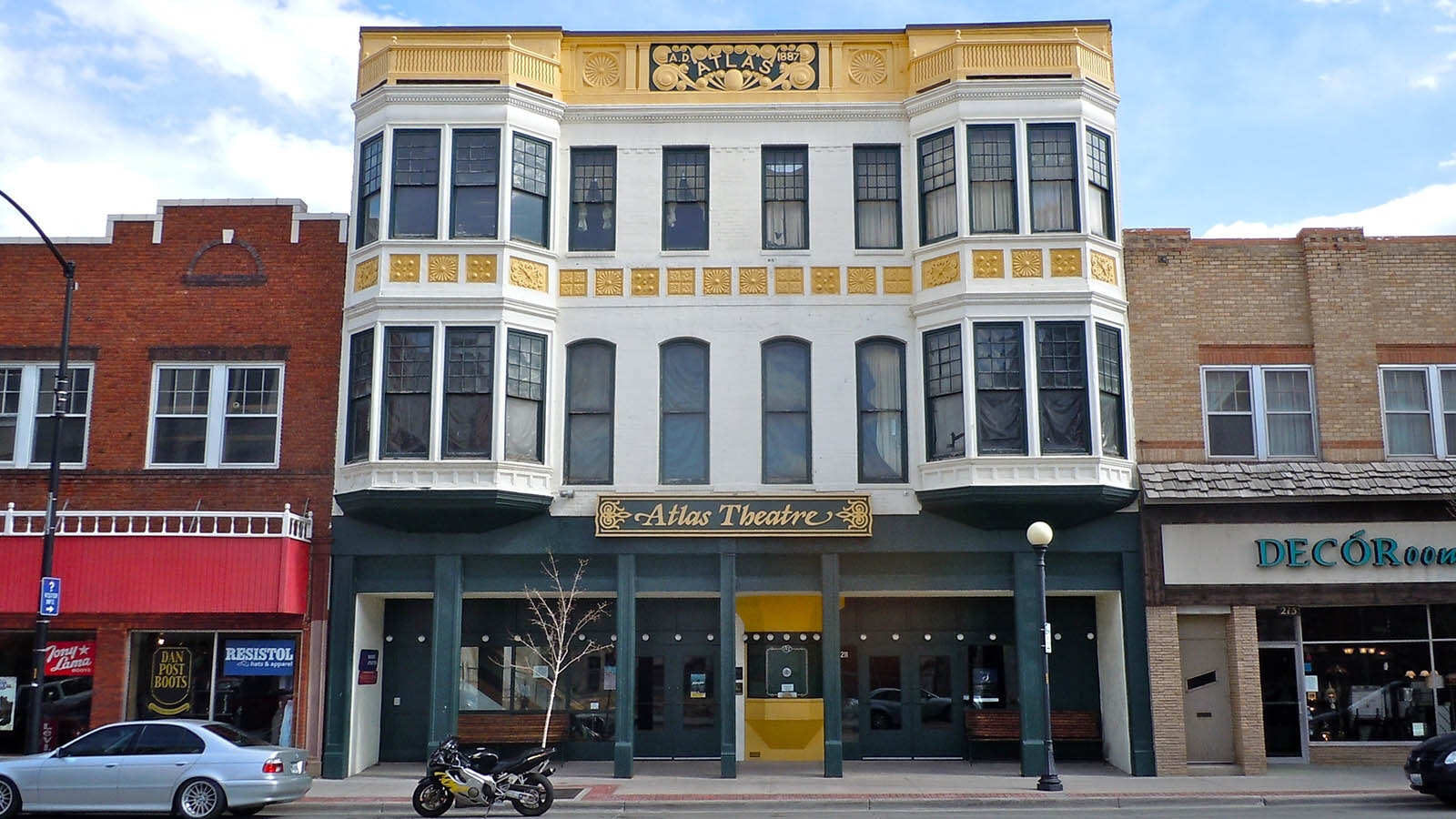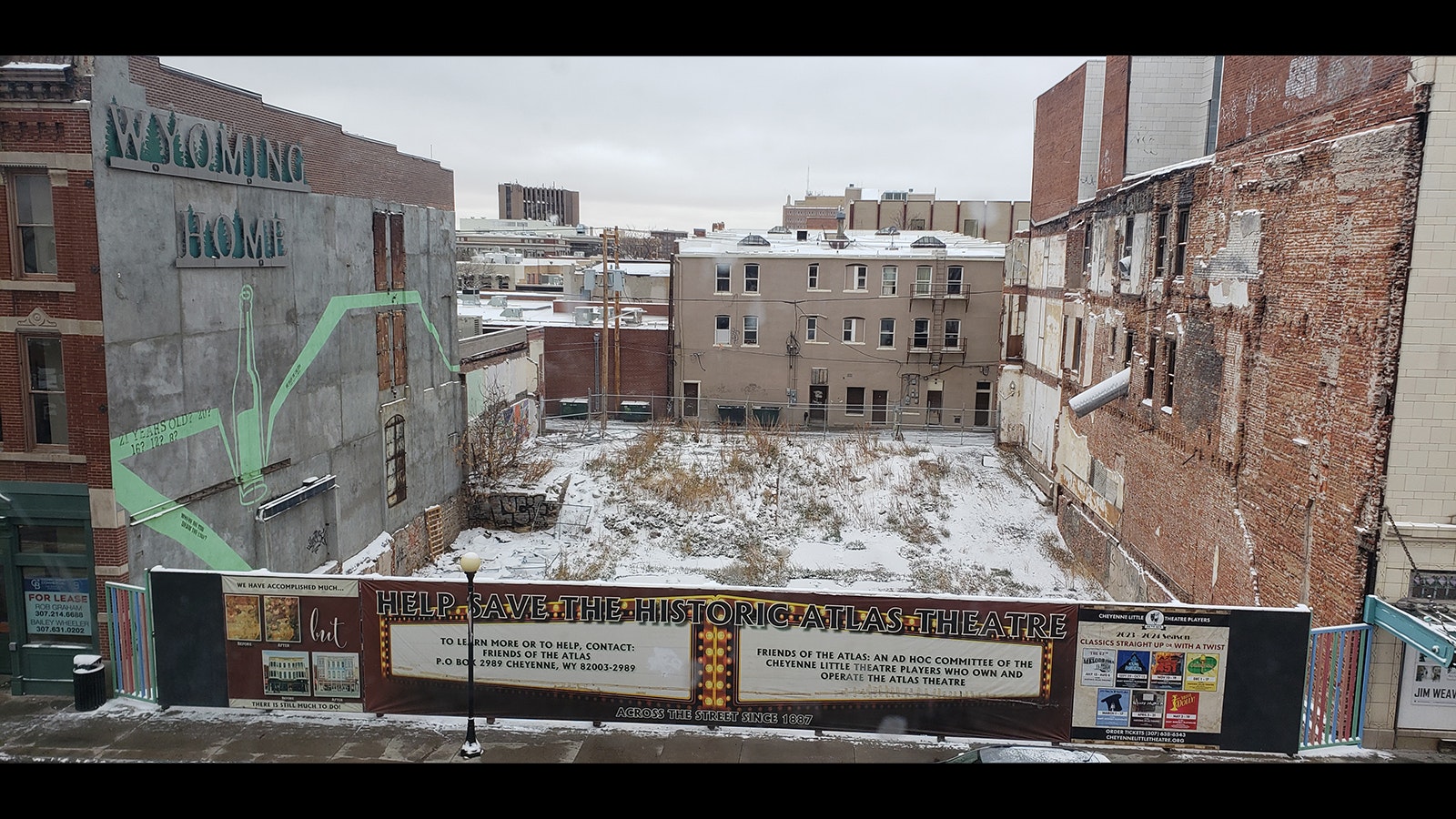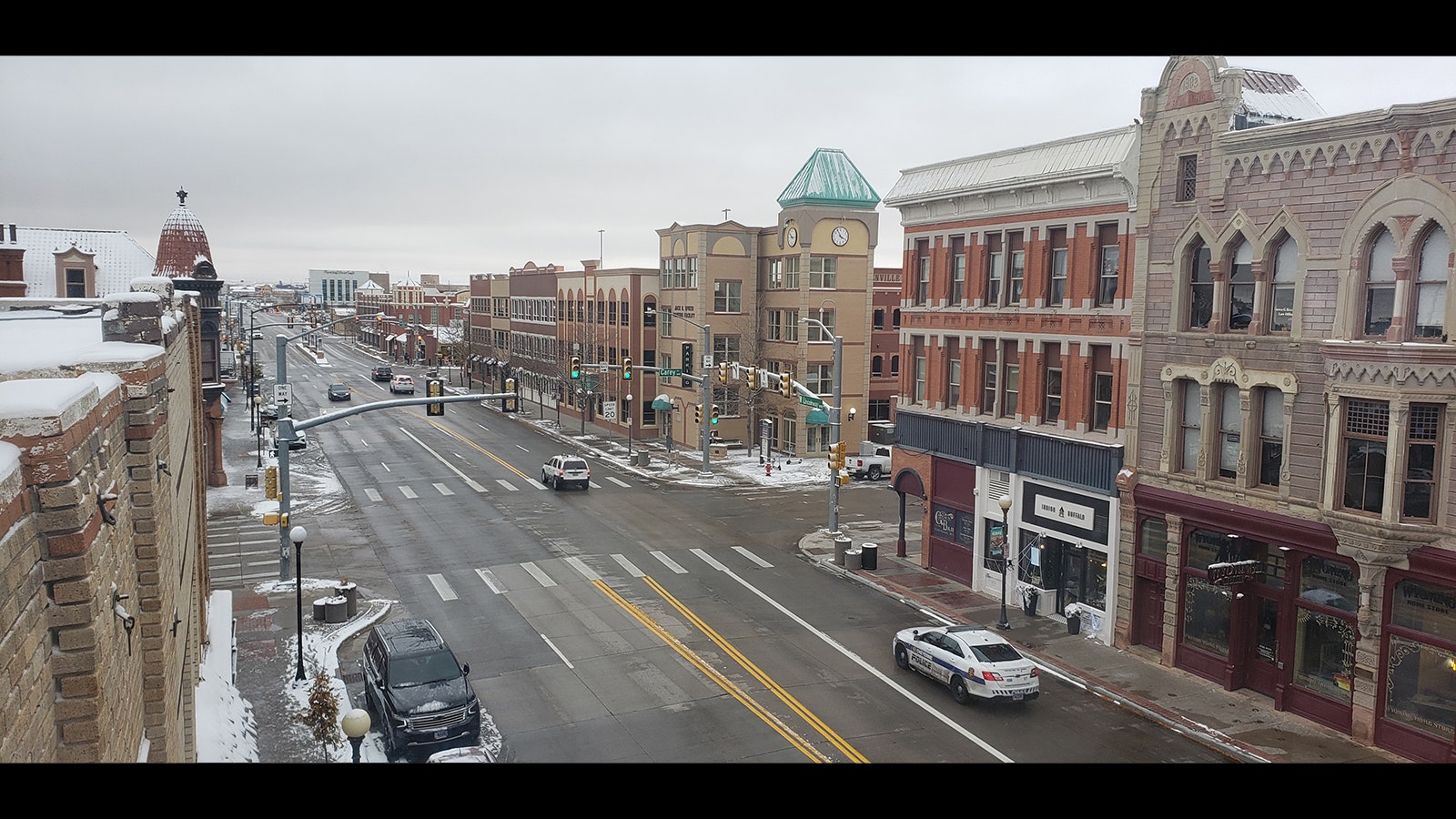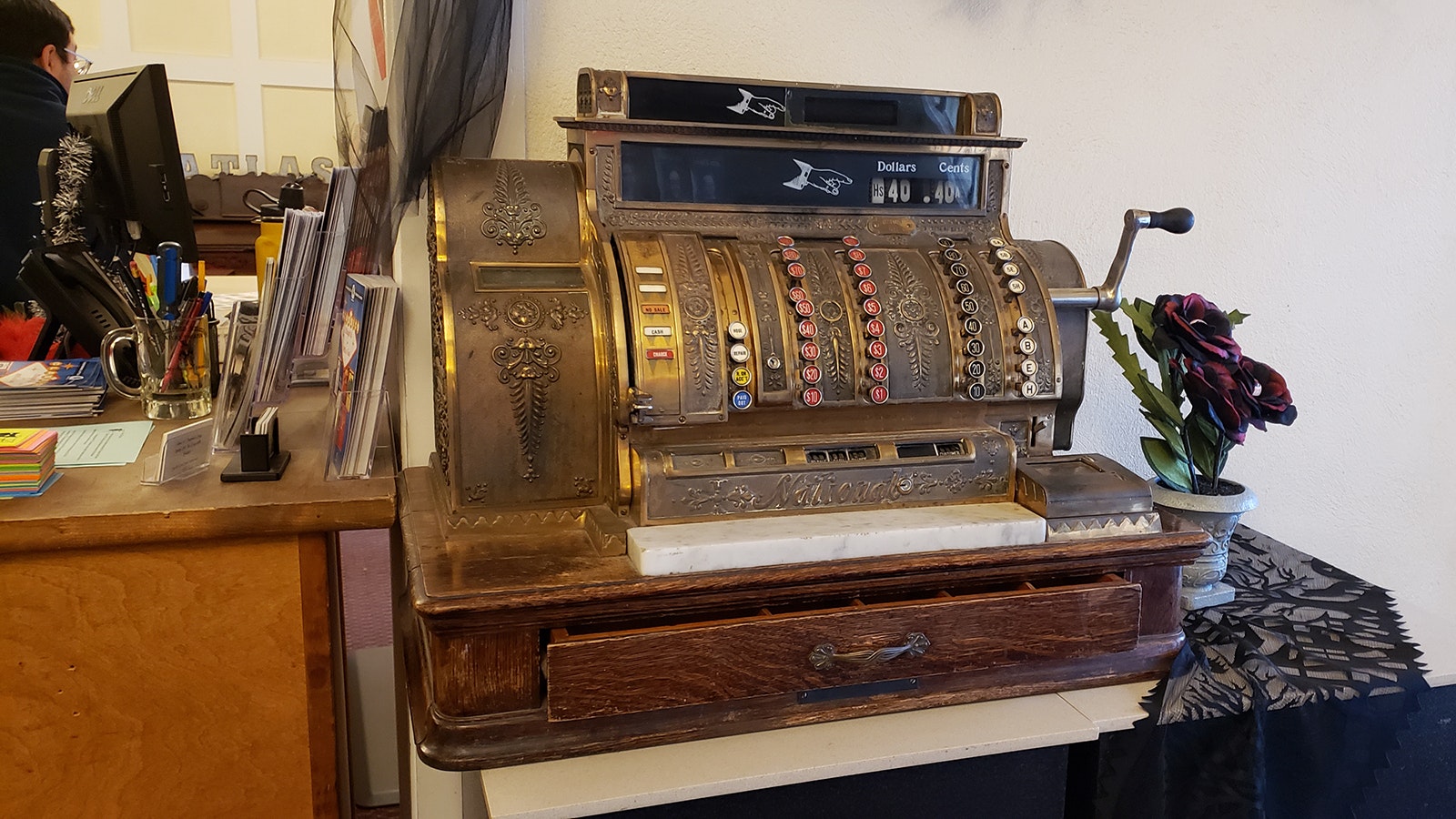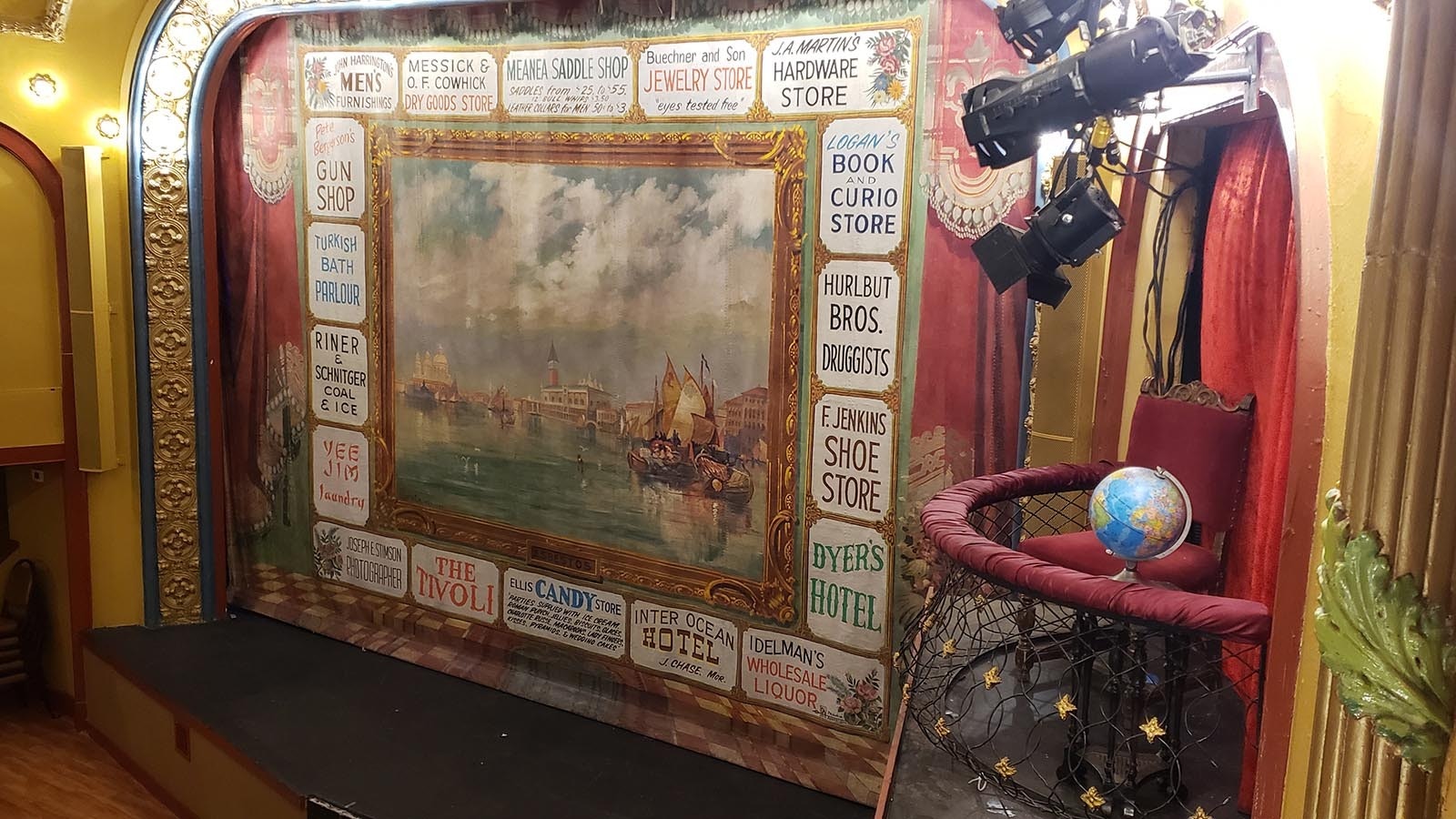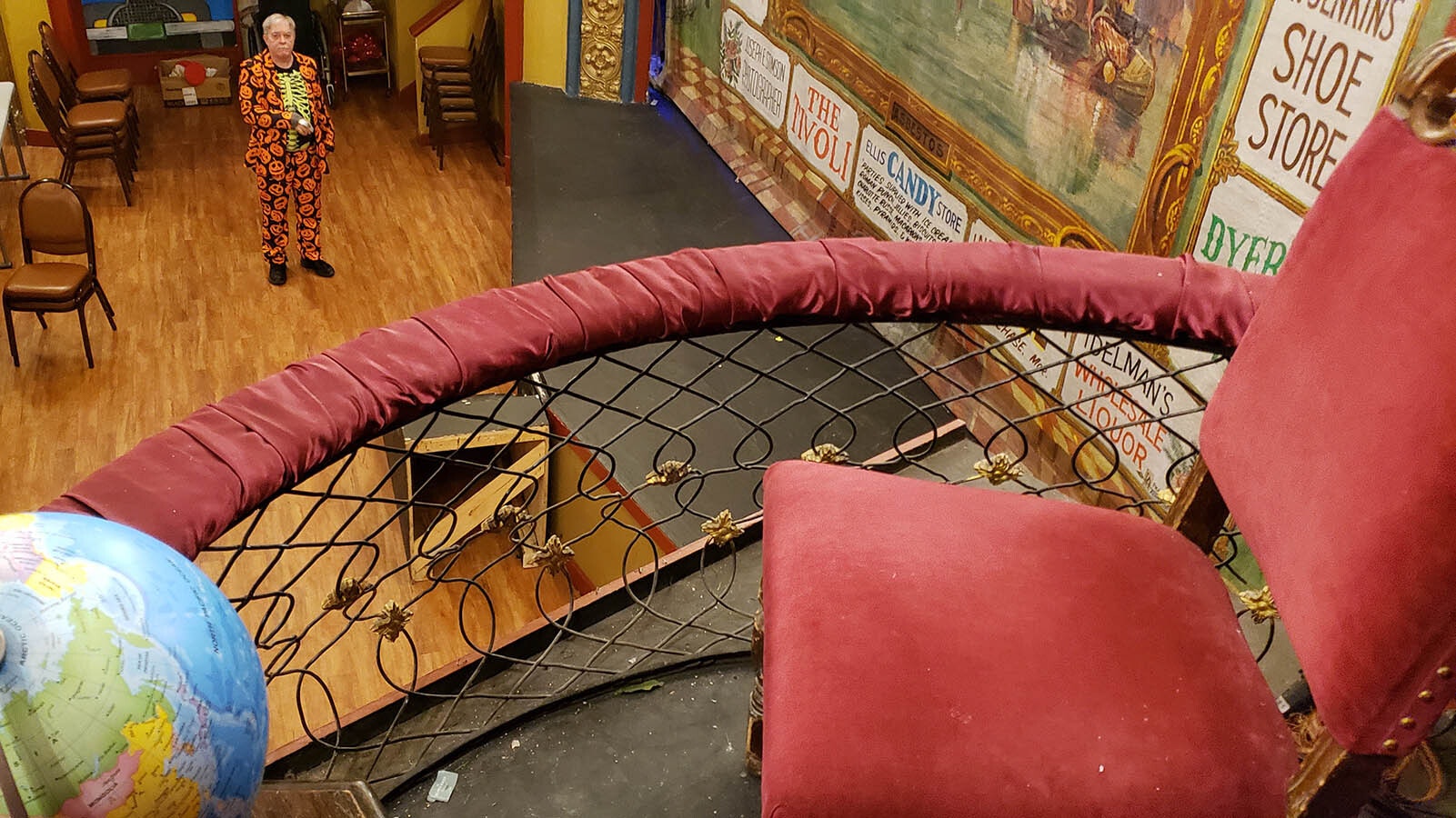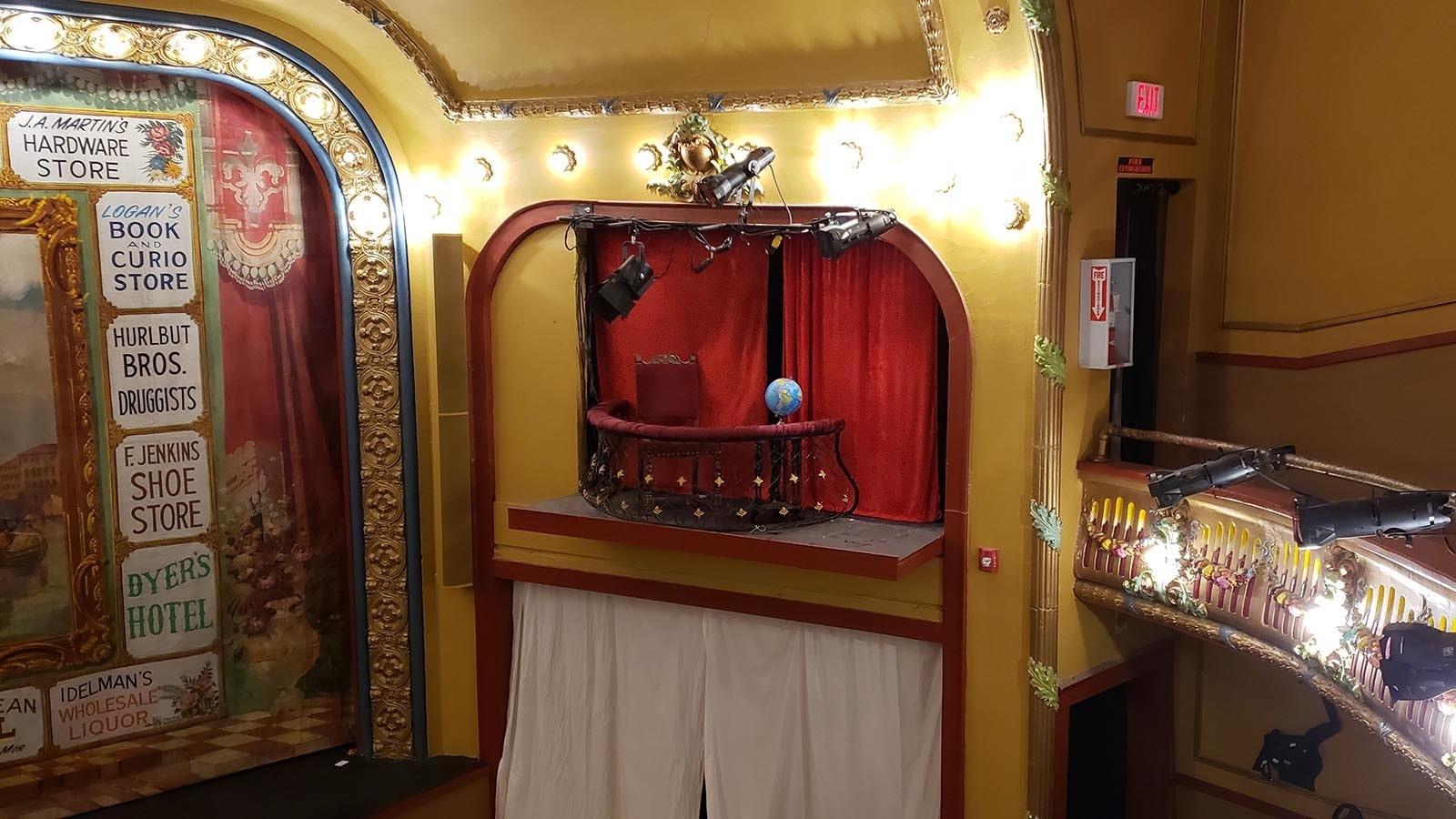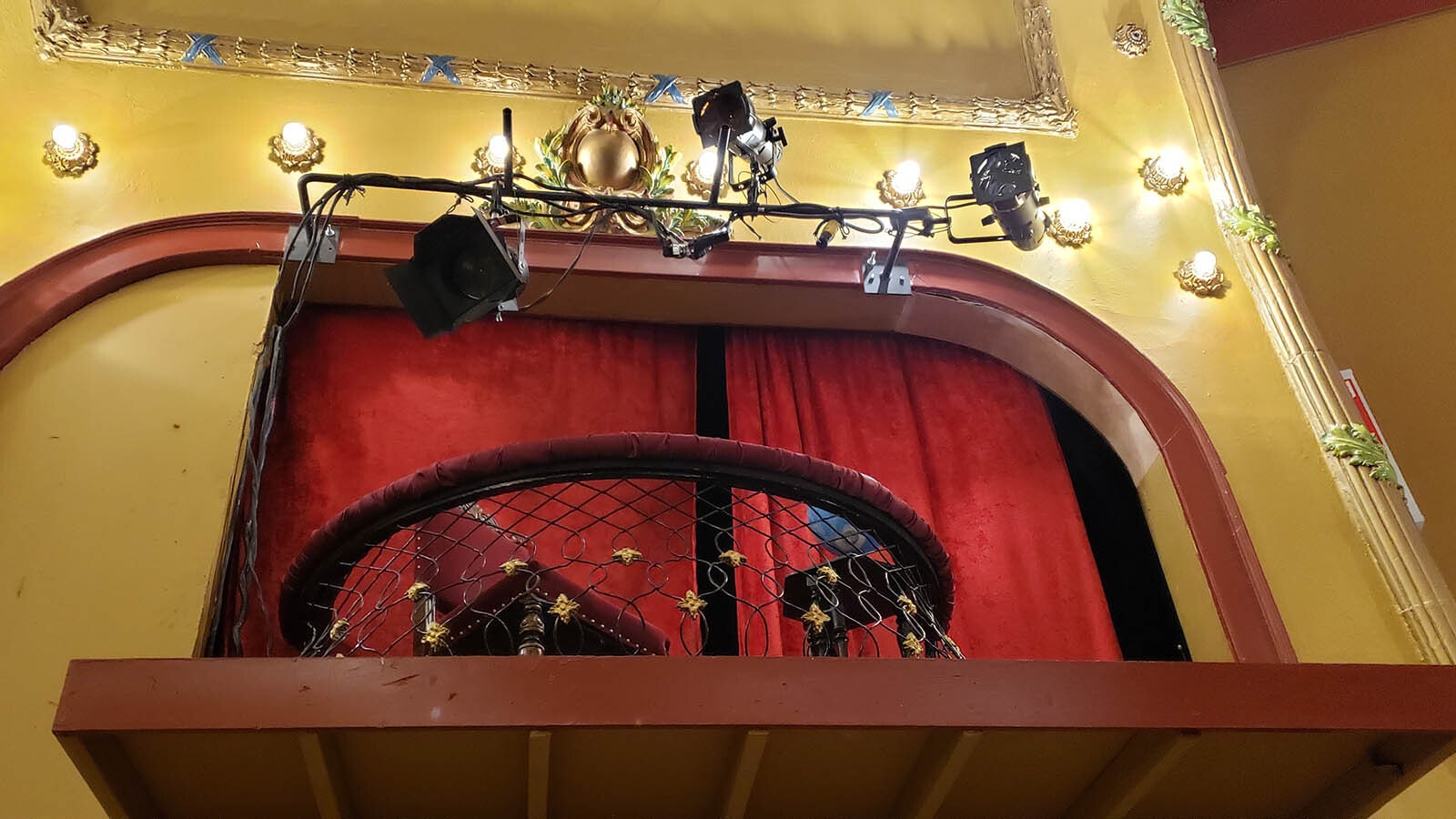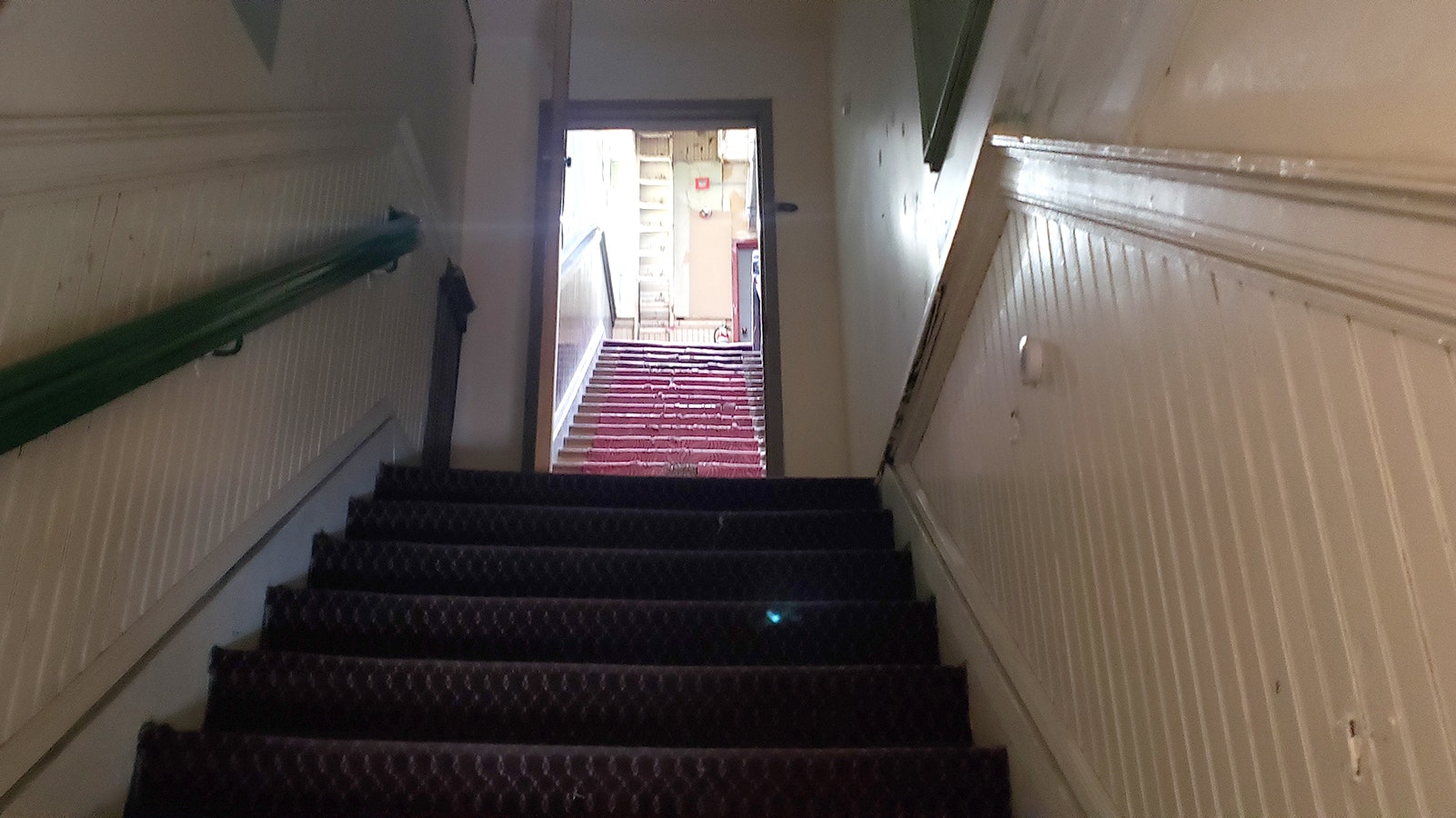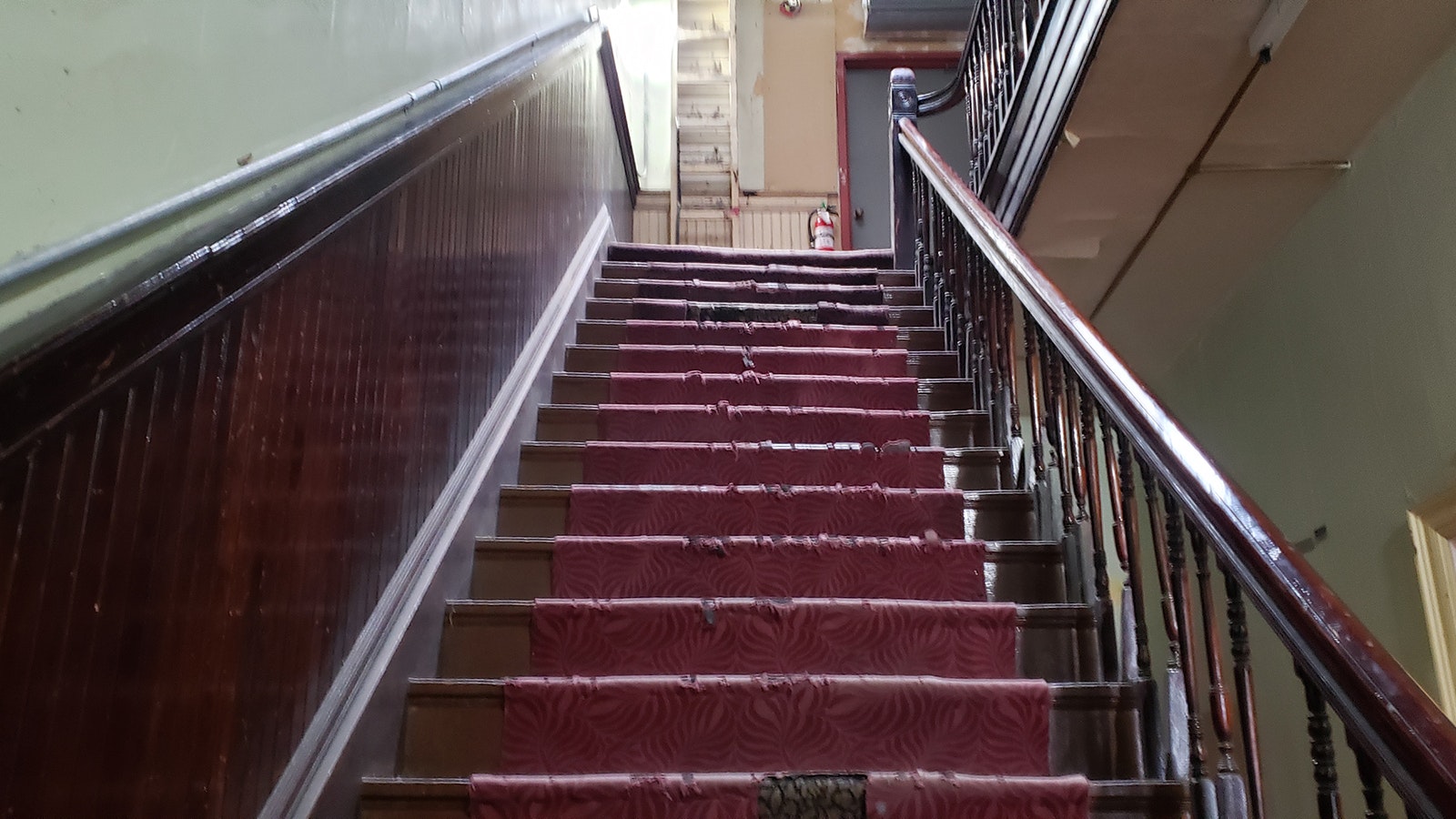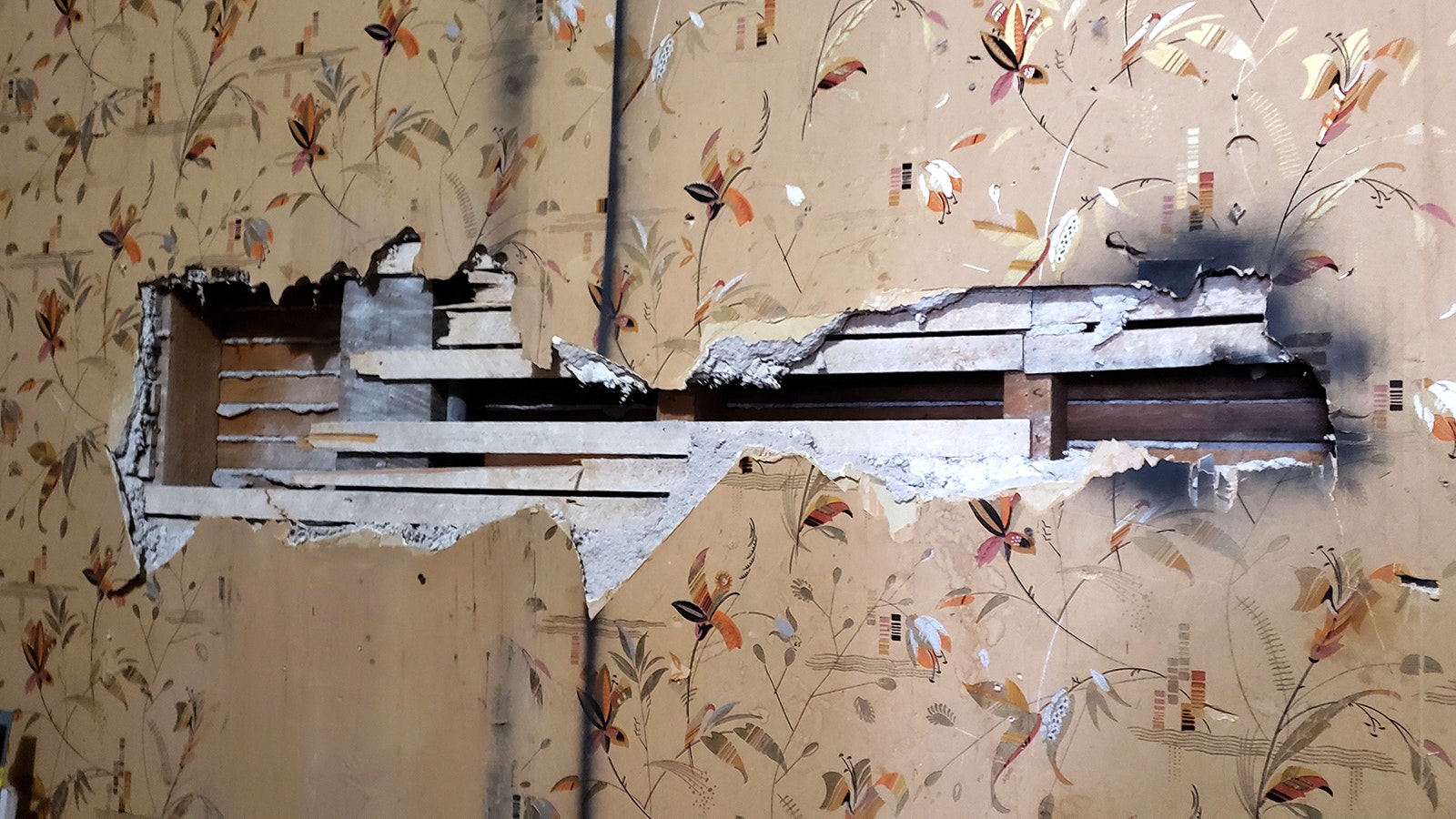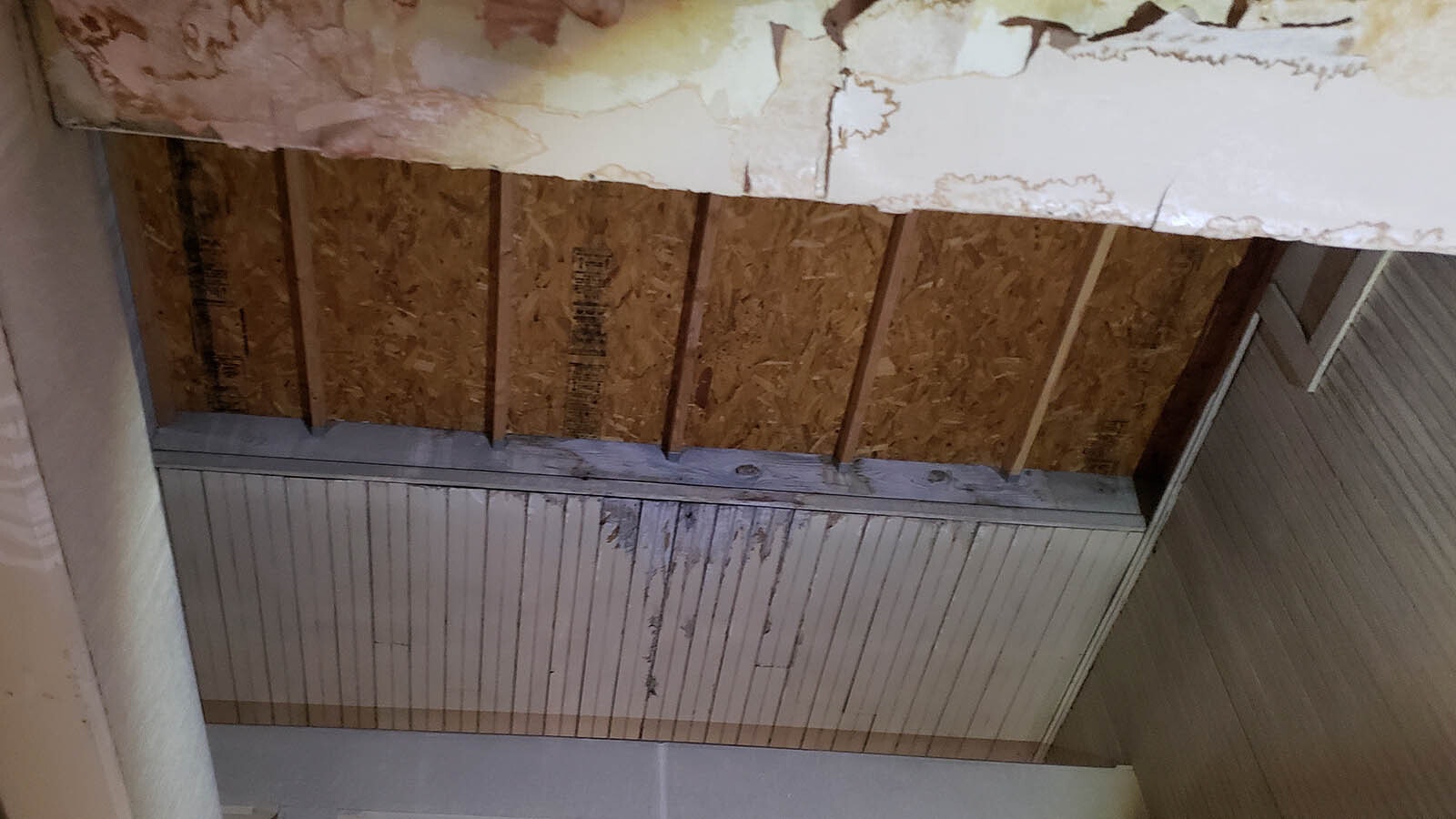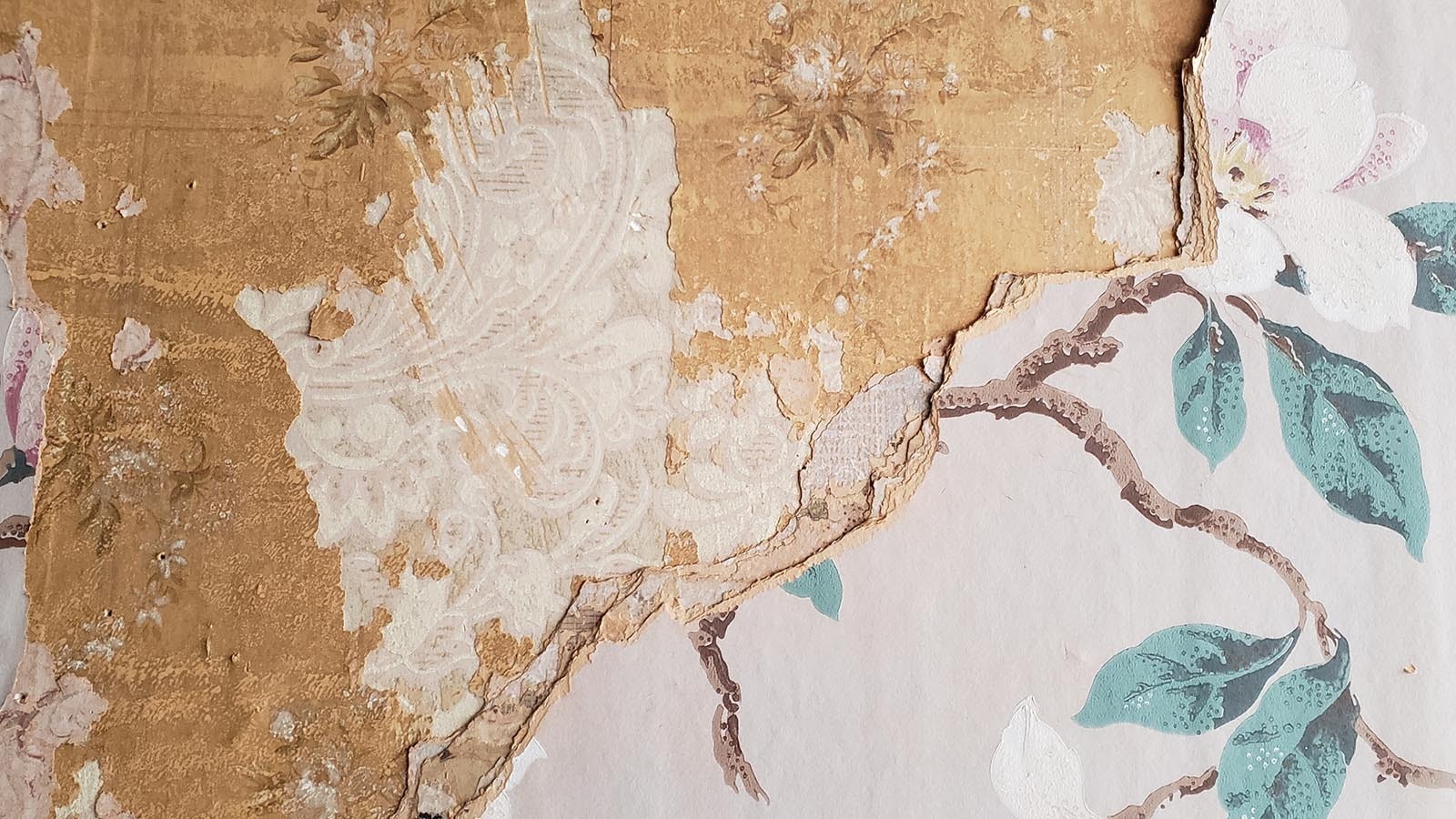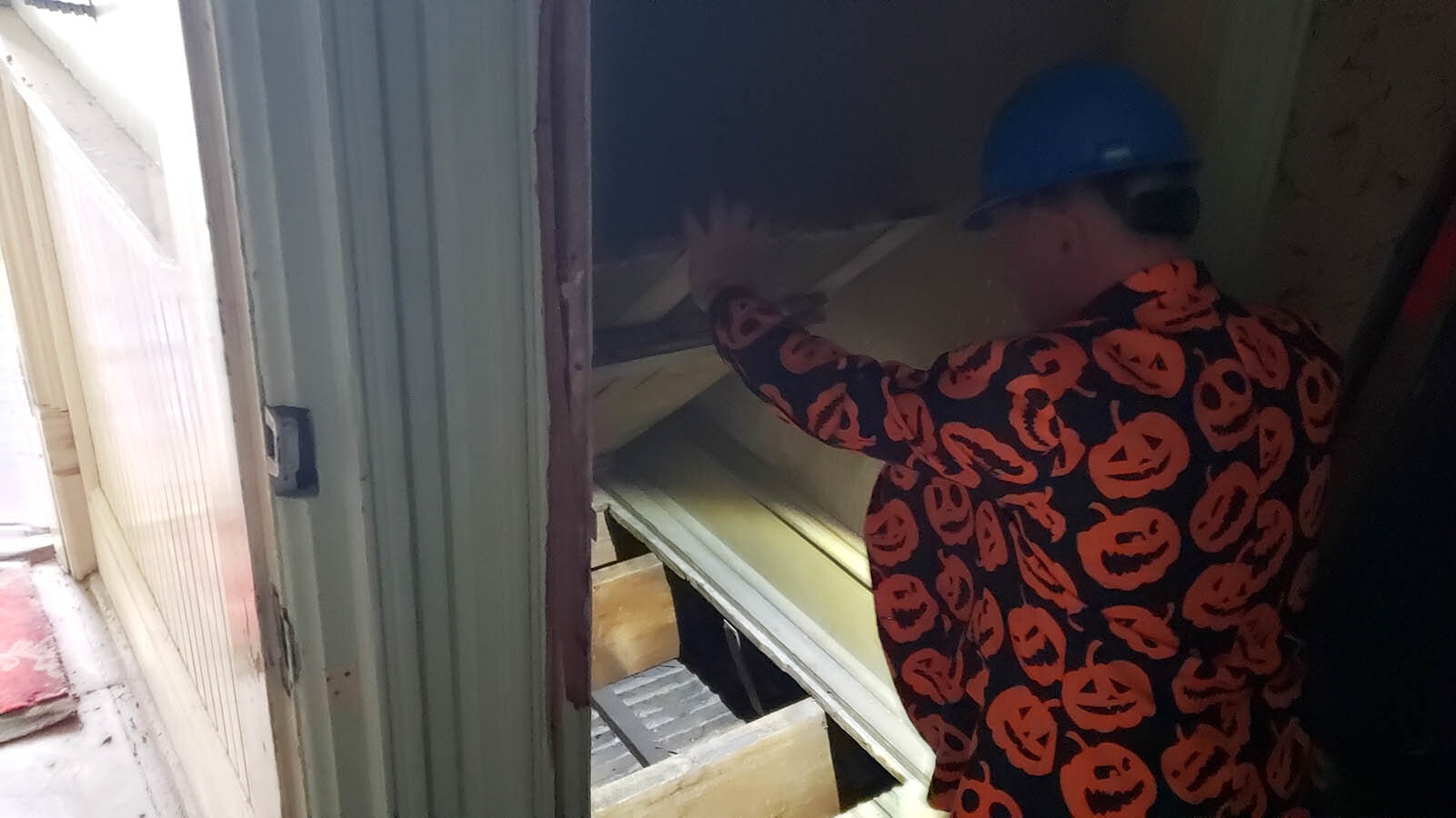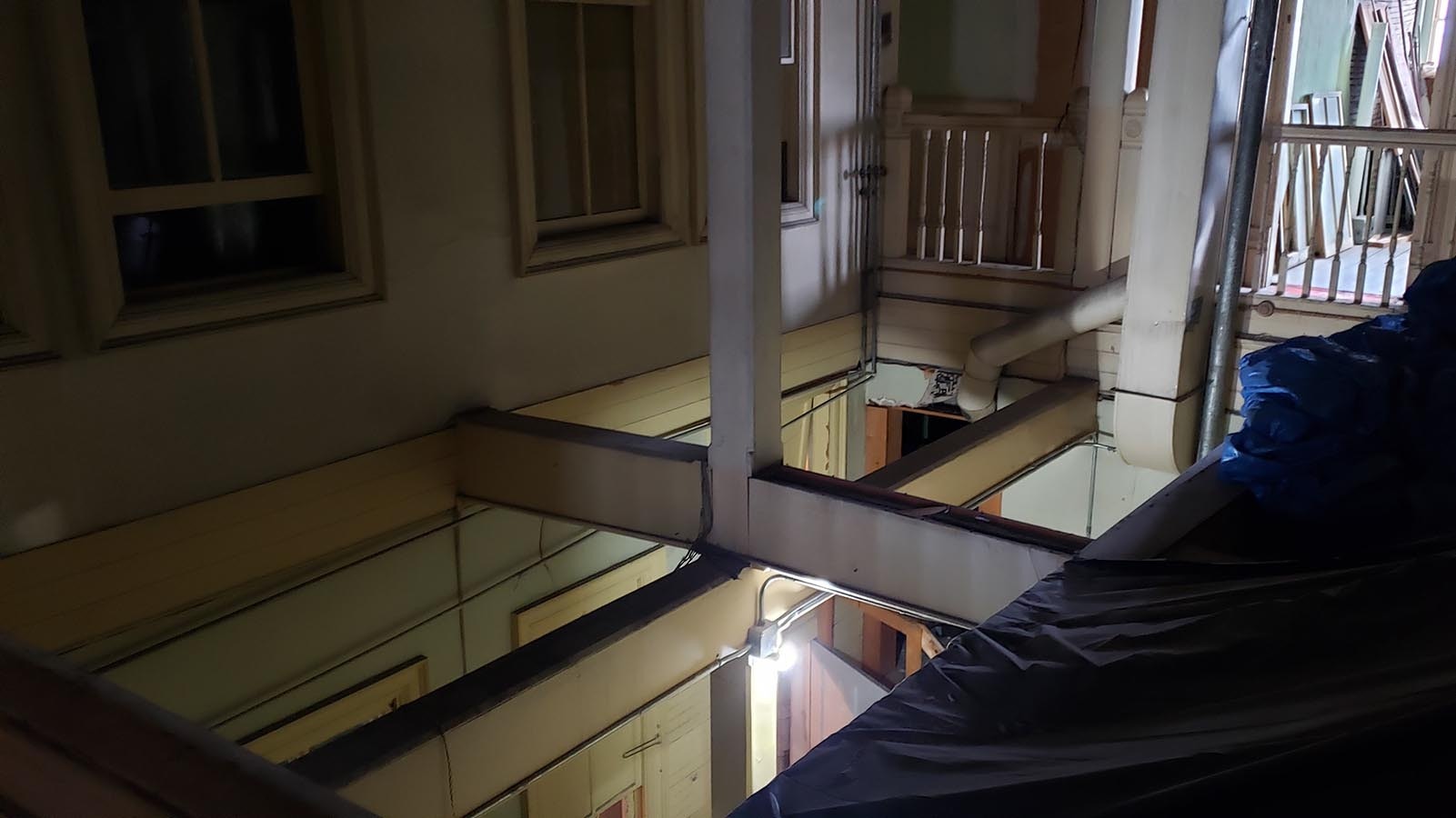CHEYENNE — It’s impossible to climb the stairs in the Atlas Theatre to its uninhabited second and third floors without a sense of vertigo. Not only are the stairs pitched backward, the view ahead is a tattered, dusty carpet that trails on like a portal to Cheyenne’s Wild West past.
The only thing that stops the sense of falling away is to grab onto the railing. Which only works for the first flight of stairs.
On the second flight, climbers are warned not to trust the railing. It’s not stable and, because of historic preservation rules, it’s difficult to repair or replace.
Behind-the-scenes tours are periodically available, particularly in October, when everyone is thinking about ghosts and haunted spaces. The Atlas is said to have her ghosts, particularly on these upper, uninhabited floors, and stories of them abound.
There’s the time the can-can girl almost took a tumble down the stairs in the basement Green Room, for example. Just as she was about to fall headlong down the stairs, she felt someone behind grab her and pull her upright.
But when she looked behind her, no one was there.
Or there’s the cane that Brenda Lyttle, who has directed a number of melodramas for the Cheyenne Little Theatre Players over the years, would put away each night, only to find it had moved overnight to a different location.
“You put props away in the same place, so the actor knows where to find them,” she said.
When Lyttle would inquire who had been in the theater moving props around, she was told no one had been there.
A Place Of Dust And Dreams
The detritus of years clutters the second and third floors. There are heavy art deco kerosene lamp holders that used to hang in the theater, as well as a strip of art deco plaster that was once part of the Atlas Theatre’s front, before it was pulled back from the street.
There’s blood spatter on the walls, left over from when it served as a haunted house and/or escape room. That was before the fire marshal determined no more than six people could be upstairs at any one time because there’s no fire escape.
“It’s kind of a mess,” Friends of the Atlas volunteer Bill Blansfield said during a recent behind-the-scenes tour. “This area has been closed off to the public since the 1990s.”
Tours are also limited to daytime, because there’s no electricity upstairs anymore, also by order of the fire marshal.
“In an emergency, you wouldn’t know who is up here, especially through smoke,” Blansfield said. “And that’s kind of going to put a kibosh on our paranormal investigators that want to come in here, because we can’t take them upstairs. The hotspots are upstairs.”
Among Cheyenne’s First Buildings
The Atlas Theatre building located at 211 West Lincolnway started life in 1887, just three years before Wyoming became a state. It was part of a wave of construction that included Union Pacific’s train depot, the Wyoming Capitol building and St. Mark’s Church.
It’s been many things over the years. At first, it was a tea and confectionary shop, with offices for a doctor and others upstairs.
In 1908, an addition was built and the first floor converted into a theater. The architect on the project was William Dubois.
The upper floors became known as the Strand Hotel in 1929, while the first floor continued as a theater.
It also had a very short stint as the Pink Pony, which resulted in a disagreeable Pepto-pink interior. But it was, for the most part, abandoned when Cheyenne Little Theatre Players bought it in 1971 as a home for their melodramas and dinner theater.
Despite all the dust and debris that litter its floors, and the blood-spattered paint still on the walls, it’s easy to imagine how beautiful the space could be.
The upstairs rooms ring an interior courtyard that was once lit by skylight. Some still have windows facing that courtyard, as well as windows that look out onto the streets.
They would have been filled with lots of glorious natural light.
Nine layers of wallpaper today cover the lath plaster walls. They are layers of history waiting to be peeled back, and legends recovered.
Saving The Atlas
Lyttle has been involved with the Cheyenne Little Theatre Players and the Atlas Theatre for 45 years. She knows much of the building’s history, not least because she’s lived through some of it.
“It’s a legendary building,” she told Cowboy State Daily. “It has an unmistakable presence and soul to it.”
That presence becomes a part of the theater experience in the building, she believes, making it one-of-a-kind.
In 2018, Architectural Digest selected the Atlas Theatre as Wyoming’s most iconic building. Owning such a building, Lyttle and the Cheyenne Little Theatre Players feel a special responsibility to see it restored.
“When Cheyenne Little Theatre bought the building, we were passionate about getting it, getting the foundation where it needs to be, getting it restored, making sure it’s stable because it’s old,” she said. “And it had been vacant for a while.”
The group started its work with cosmetic changes. A new paint job for the exterior to brighten the place up. And the restoration of the vintage asbestos curtain, one of only three remaining in the United States. That was done at the same time that the state Capitol’s dome was restored, by the same restoration team.
“Those are things that the public could see that would make a difference to people,” Lyttle said. “The next steps are things that aren’t so sexy and fun. We have to reinforce some of the foundation, and there are pillars that hold up the floor that have to be reinforced.”
One pillar was even removed at some point during a past renovation. An architect has suggested that will need to be replaced before the upper floors are weight-bearing enough for anything substantial.
“Part of our plan with all of this is the theater needs more than a two-stall bathroom for men and a two-stall bathroom for women,” Lyttle said. “And we need to have an elevator for people to go up to the balcony, because right now the only way to get to the balcony is by the stairs.”
To facilitate moving things from the second and third floors, and to eventually provide storage space for set pieces and other props, Cheyenne Little Theatre Players has bought the light store next door.
That provides some rental income to Cheyenne Little Theatre Players. It will provide space to eventually expand the green room, as well as add a commercial kitchen space for dinner theaters, and provide storage.
There’s a sorting process underway right now with the items that were stored on the second and third floors of the Atlast Theatre. The old kerosene lamps and the Art Deco mural will be saved, Lyttle said. But old, moth-eaten T-shirts from shows decades old and the old organ that doesn’t work anymore probably will not.
Among The Oldest Cheyenne Buildings
Given that the Atlas is among the oldest buildings in Cheyenne, there’s lots of old Wild West history attached to it.
“You can imagine it, you know, when the West was first getting settled, and the railroad coming through, right here,” Lyttle said. “And when the railroad workers came through, then, of course, they needed protection from the Indians, from Native Americans.”
That brought along an Army base, Lyttle said, and then, on the heels of that came prostitution. Lyttle said her research and that of others suggests that particular trade was a big economic sector for the town at the time, even if it’s something folks don’t always want to talk about.
“So, kind of the legend around the Atlas is that it was built as a part of that era when Cheyenne, a lot of the downtown, was built by prostitution,” Lyttle said.
There are, still to this day, call buttons on the second and third floors of the Atlas, which are believed to have been a part of that history, Lyttle said. And there were tunnels that once connected the Atlas to the Capitol.
“Back in the day, when they traced the wiring, it went to a building that was known to be a prostitution house,” Blansfield said during a recent behind-the-scenes tour. “And we think that the guys would just hit the button and it was like, ‘Oh, Strand Hotel 22, Mary, you take it.’ And that’s why we call them call girls.”
The view from the upstairs rooms of the Atlas that face West Lincolnway are still glorious. They show amazing architecture of a historic downtown to amazing advantage, and invite imagination of a long ago time.
They also have a view straight down into “The Hole” next to the Hynd’s Building. That’s where a bakery burnt up some years ago.
“Back in the day, you could see the capitol that way,” Blansfield said, gazing out the window and gesturing up the street. “And not many can say they’ve seen in The Hole, so this is your bragging rights.”
There’s also a nice view of a famous bay window in a building that’s catty-cornered across the street which used to be a law office. Blansfield said it’s the law office where Tom Horn was tricked into making the confession that led to his hanging for the murder of Willie Nickells.
Secrets In The Hotel
A cool secret that’s been found upstairs in the Atlas Theatre is a floorboard that’s been artfully loosened to create a hiding place.
It’s a roomy space, big enough to hide several bottles of whiskey, or a lockbox of money, though it’s a little too small to hide a person or even a small child.
The floorboard was found in a small closet space, secured by a piece of wooden trim, which completely hides the opening from casual view. It was discovered one day when some cleaning was being done and a worker noticed that the trim had come loose.
As the person was fixing it, the trap door was revealed. No telling how long it had remained a secret.
“We’re not sure about who did it,” Blansfield said. “But we have a feeling it was done for prohibition, so we refer to it as the hooch hole. We think they kept their hooch in there.”
There are also bathrooms that have odd windows, positioned to offer a direct view of the area right where the clawfoot tubs used to be.
“Not that anything nefarious ever went on in this building,” Blansfield said. “But for two bits (cowboys) could pay to watch a woman perform in a bathtub. So, they could stand outside the window and watch this woman bathing, and it’s like OK, yeah. But, of course, this was the Wild West and that’s what they did back then.”
Home Of Melodrama
Little Cheyenne Theatre Players purchased the Atlas Theatre for their melodramas, which have a 50-plus year history in Cheyenne.
A volunteer pool of 300-some people helps put on the melodramas, which are not just famous in Wyoming.
“We have people coming from all over the world to see them,” Lyttle said.
“When we bought it, (the theater) was all this horrible pink from when it was the Pink Pony Nightclub,” Lyttle said. “We left it pink for a long time because it was the Pink Pony, you know, there was a history there.”
Eventually, though, it was renovated to a more pleasing red and gold color scheme.
“Everybody who comes into the Atlas for the first time is just awestruck with how beautiful it is,” Lyttle said. “And you hear things like I’ve never seen anything like this before. And there’s just a feeling about the place. A very old soul, encompassing kind of feeling.”
On one occasion, though, the awestruck chatter from guests was not about how they’d never seen anything like it before. Quite the opposite.
“A couple of years ago during Cheyenne Frontier Days tours, we had a couple of these ladies from France,” Blansfield said. “And they came down and they just froze and all of a sudden, they are just going ‘Yip, yip, yip.’”
Eventually, the ladies apologized for all the chatter in a foreign tongue and explained that that they knew of a theater just outside of Nice that’s identical.
“So, they were taking all kinds of pictures,” Blansfield said. “Because they’re not going to believe this at the motel. And they said the name was like La Fancier, or something like that.”
Aside from the eye-catching 1907/08 asbestos curtain, which was painted with a scene from Venice, Italy by then-famous Chicago artist, Eugene Cox, there are two balcony seats that really draw the eye.
They were once the most expensive, but worst seats, in the house, Blansfield said.
“They were not meant to see the play,” he said. “They were meant to be seen at the club. So that’s where the cattlemen and all the rich people sat. It’s like, ‘Hi, I’m god. I got the money, and you don’t, you’re peasants. Kiss my ring, kiss my foot, kiss my you know what.”

Renée Jean can be reached at renee@cowboystatedaily.com.

